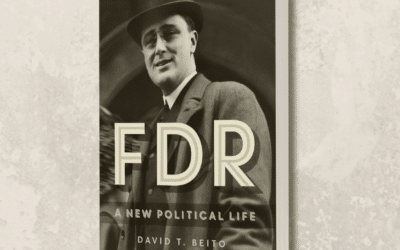Before video recorders became widely available, many instances of police brutality went unrecognized by the general public. Police abuse is hard to prove when it is a citizen’s word against the state’s.
But as more households began buying camcorders to document their lives for posterity, many didn’t realize that they were now armed with technology that had the power to expose government abuses to the entire country.
A major reason the 1991 police beating of Rodney King became such a sensationalized instance was that it was one of the first times such an event was captured on film and broadcast for the whole world to see.
Suddenly, it seemed as though the scales of power were tipping. Now armed with technology that could prove the systematic abuse that had been so rampant for years, especially in communities of color, justice could finally be served. Or so we thought.
And yet, even with the disturbing footage of the altercation being broadcast repeatedly on network television, the officers involved were acquitted of all charges alleging excessive force. Outraged that justice was averted despite all the incriminating evidence, the residents of Los Angeles were frustrated and their rage boiled over into riots that continued for almost a week before angry crowds finally dispersed.
It was hard to understand how such a thing could have happened. Perhaps, it was because video technology had not yet advanced to a point where the scene could be clearly depicted for viewers. Taken from afar, the images were grainy and impersonal. King’s face could not be seen, neither could those of the officers. Maybe, once technology had time to advance, footage of police brutality would finally be used to obtain justice.
But over two decades after the Rodney King incident, the shooting of Michael Brown showed us that graphic imagery would not be enough to change things.
Ferguson
True, camcorders were a revolutionary invention, but the technology was bulky, low quality, and if you were far away, these cameras were still unable to capture a situation with perfect clarity. However, who would have thought that soon, nearly every American would be armed with a camera that fit neatly into their pocket and could take vivid color recordings with a moment’s notice.
The shooting and subsequent death of Ferguson, Missouri resident Michael Brown was not the first instance of police brutality in the modern smartphone age, but it was certainly the most high profile. After an altercation had erupted between Brown and Officer Darren Wilson, shots were fired and Brown lost his life.
As the shots rang out, passersby quickly pulled out their camera phones and took still shots of Brown as he lay dying in a pool of his own blood. These images, far more graphic than those portraying the Rodney King debacle, struck at the heart of American sympathies. How could this happen in the freest country in the world?
But even with these pictures posted and shared all over social media, this particular situation still seemed a bit murky. Eyewitnesses on either side of the issue changed their statements and no one seemed to know what really happened.
Many Americans began wondering if witnesses had perhaps started recording sooner and had been able to capture the entirety of the fatal altercation, we would have known exactly what had happened and justice would be properly served.
And then the Eric Garner incident happened.
“I Can’t Breathe”
Garner, whose only crime had been selling single cigarettes to those who wanted to bypass New York City’s extravagant tobacco taxes, was aggressively stopped by police officers while standing outside. Garner, whose presence was a frequent fixture outside a local convenience store had been stopped by cops so frequently, he finally asked the officers why they were harassing him yet again, especially when he had no “black market” cigarettes on him at the time.
Garner was then placed in a chokehold by an officer, a move that New York City law enforcement had actually been banned from using against citizens as it had been deemed “excessive force.” Yet, it was used anyway even though Garner, although a large man, posed no imminent threat to the officers and was not actually caught doing anything illegal.
While placed in the chokehold, Garner can be heard calling out to the officers that he cannot breathe, but to no avail.
Garner lost his life that day, a tragedy caught on film by a passerby, who was subsequently harassed by police officers after the footage went viral. Unlike Michael Brown’s death, this entire altercation was caught on camera for the world to see. There were no unanswered questions about the use of force or whether or not Garner had acted in a manner that led officers to fear for their life.
But even though there was viral footage of the incident, justice was still not served. The officer involved was acquitted and the Garner family was left wondering why this was allowed to happen in an allegedly free country.
If a video recording of the entire killing could not bring justice to the memory of Eric Garner, then what were we to do? Perhaps it was because the footage went viral after the fact; maybe some thought it could have been doctored to fit a narrative. Perhaps, if there was a way to have footage live-streamed in real time somehow, perpetrators of police brutality would no longer be able to get away with their crimes.
And then came the tragic death of Philando Castille.
Philando Castile
Chills run down the spine of anyone who has the stomach to watch the footage of Philando Castile’s death last summer. Last July, Castile, his girlfriend Diamond Reynolds, and her four-year-old daughter were pulled over for a routine traffic stop in St. Anthony, Minnesota. The officer asked to see Castile’s license and registration. Understanding the risks unfortunately involved with being pulled over as a black man, Castile informed the officer that he was a licensed gun carrier and that he did have the gun with him in the car.
As Castile went to grab his identification and registration, Officer Jeronimo Yanez pulled out his gun and shot him seven times. Knowing all too well that the system is not designed to protect those who are harmed at the hands of law enforcement, Reynolds decided to pull out her smartphone and immediately livestream the situation on Facebook live.
The footage captures some of the last moments of Castile’s life as viewers see him slumped over the steering wheel covered in blood as his girlfriend and her daughter are shouted at by Yanez. There is no immediate medical assistance given to Castile. Instead, Reynolds and her daughter are treated like criminals as Yanez scrambles to figure out what to do next.
This damning footage was revolutionary, or at least, it should have been. There was no valid excuse for the officer involved in the Castile case. There was no opportunity for the live stream footage to be altered and there was no reason to believe that the images in the footage misrepresented or misconstrued the situation. Yet, last week Jeronimo Yanez was acquitted of all charges in the death of Philando Castile.
Now we are left wondering what can be done if technology is not the great equalizer we had hoped.
Ideas Are Bulletproof
Technology may not be enough to change the trajectory of our criminal justice system, or at least not as rapidly as many activists had hoped. But that does not mean we are without hope altogether. At the risk of sounding cliche, it has often been said that “ideas are bulletproof,” and when it comes to obtaining justice, this sentiment rings true.
The state is able to keep a stranglehold on its power by keeping its people in a perpetual state of fear and hopelessness. As our hearts drop with each new instance of injustice, our resolve should not be lessened, but solidified.
The “law and order” rhetoric perpetrated by so many in power advances a belief that we are pawns in a system that has been crafted specifically to work against us. But things are changing.
Technology on its own may not be enough to change an outdated system, but with each graphic image of state violence, more people are understanding that the justice system is anything but just. As a result, bipartisan efforts to advance criminal justice reform have expanded. Conservatives and progressives have even formed unconventional alliances in attempts to bring recognition to the problem that is impacting so many.
This latest miscarriage of justice may have many of us feeling despondent, thinking that these victims have lost their lives in vain. But ideas are changing. And as Ludwig von Mises wrote, “Both force and money are impotent against ideas.”
This article was originally published on FEE.org. Read the original article.






























